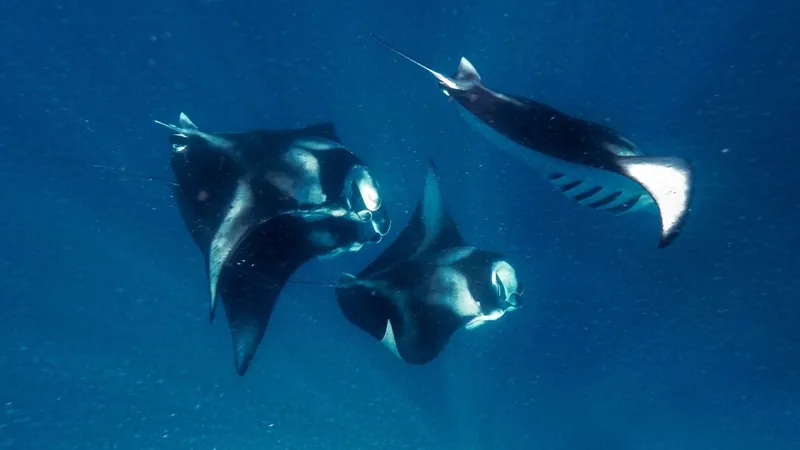
Manta Rays: Nature's Secret Weapon Inspiring Advanced Robots and Water Filtration Systems!
2024-12-31
Author: Chun
Manta rays, the majestic giants of the sea, not only capture our imagination with their graceful movements but are also paving the way for innovative technologies in robotics and water filtration! Researchers at North Carolina State University and the University of Virginia have engineered a remarkable soft robot inspired by the swimming techniques of these magnificent creatures, achieving speeds nearly double that of its predecessor—an astonishing 6.8 body lengths per second! This breakthrough makes it the fastest soft robot to date.
The Engineering Marvel
The recent advancements are not just in speed; this latest version is also more energy-efficient, allowing it to navigate through water like a real manta ray—swimming both on the surface and diving below. The key to this innovation lies in the manta rays' unique swimming style known as mobuliform swimming. This technique involves a wave-like motion that creates powerful vortices, pushing water backward and providing propulsion forward.
“Our research emphasizes the importance of the waveform shape in generating thrust efficiently,” the team revealed in their groundbreaking study published in *Science Advances*. The robot's body is designed from silicone, featuring flexible fins that mimic the dynamic, oscillating movements of real manta rays. When air is pumped into its body chamber, the wings flap, effortlessly moving through various depths in the water—a feat that not only highlights engineering finesse but also reflects the fascinating capabilities of nature.
Revolutionizing Water Filters
In another game-changing research initiative, a team at MIT has tapped into the feeding mechanisms of manta rays to redefine industrial water filtration processes. Manta rays are natural filters, capable of consuming plankton while simultaneously breathing. Their unique mouth structures, resembling dashboard air conditioners, have inspired researchers to enhance the efficiency of water filtration systems.
The MIT scientists have focused on the mobula rays, which include mantas and devil rays, noting their superior ability to let water in swiftly while effectively capturing larger plankton particles. By 3D-printing specially designed plates that mimic the filtering properties of these rays, the team developed innovative filters capable of controlling inflow and generating vortex actions—significantly improving water treatment processes.
In experiments, it was discovered that varying the speed of water pumping through these filters mimicked the natural behaviors of mobula rays, allowing for optimized filtration. The researchers anticipate that these vortex-driven filters could revolutionize industrial water treatment, leading to more effective and faster purification processes.
Nature: The Ultimate Innovator
Manta rays may seem like otherworldly beings, gliding through the ocean depths, but their natural adaptations offer critical lessons for modern technology. From advanced soft robotics to revolutionary water filters, these enigmatic creatures showcase the incredible potential of biomimicry. In a world increasingly reliant on technology, looking to nature may provide the smartest solutions—proving that sometimes the most advanced tech comes straight from the heart of the ocean.
As we continue to discover and develop solutions inspired by the depths of the sea, who knows what other secrets nature has in store for us? Manta rays are just the beginning of this exciting journey towards innovative advancements!



 Brasil (PT)
Brasil (PT)
 Canada (EN)
Canada (EN)
 Chile (ES)
Chile (ES)
 Česko (CS)
Česko (CS)
 대한민국 (KO)
대한민국 (KO)
 España (ES)
España (ES)
 France (FR)
France (FR)
 Hong Kong (EN)
Hong Kong (EN)
 Italia (IT)
Italia (IT)
 日本 (JA)
日本 (JA)
 Magyarország (HU)
Magyarország (HU)
 Norge (NO)
Norge (NO)
 Polska (PL)
Polska (PL)
 Schweiz (DE)
Schweiz (DE)
 Singapore (EN)
Singapore (EN)
 Sverige (SV)
Sverige (SV)
 Suomi (FI)
Suomi (FI)
 Türkiye (TR)
Türkiye (TR)
 الإمارات العربية المتحدة (AR)
الإمارات العربية المتحدة (AR)